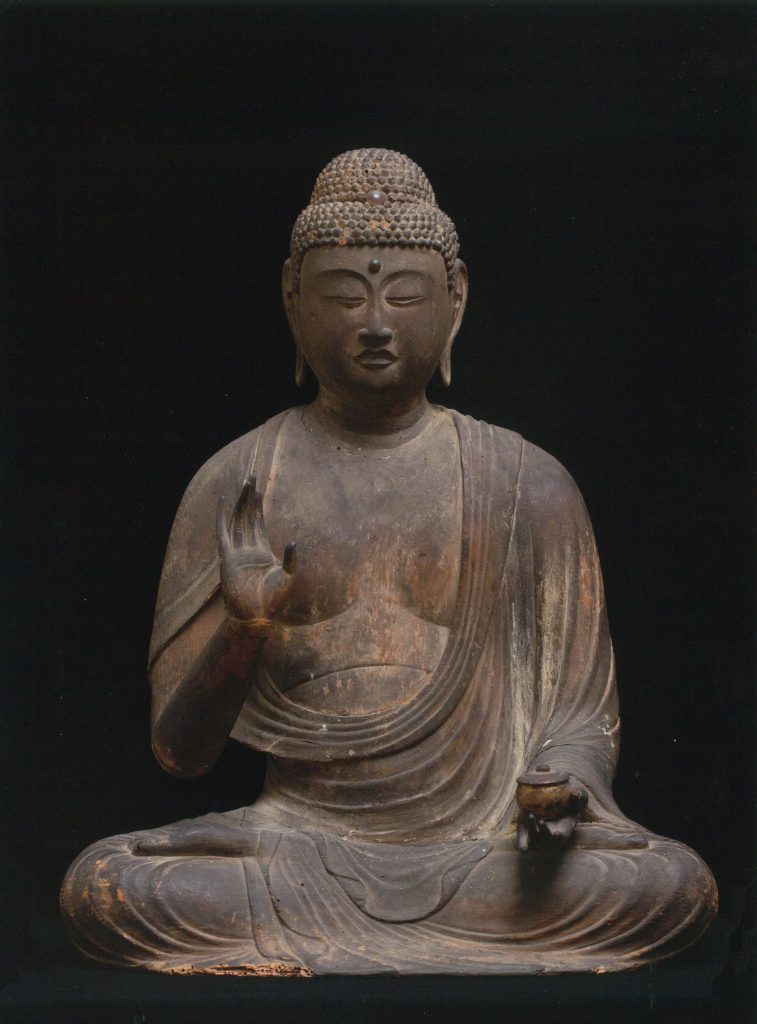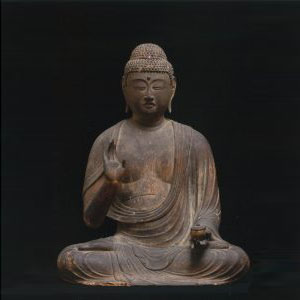
・年代:平安時代 12世紀
・法量:52.8cm
Statue of Yakushi Nyorai
Era: Heian period, 12th century
Dimensions: 52.8 cm
手に薬壺を持ち、人々を病から救う薬師如来の坐像。構造は、頭体を桧の一材でつくり、前後に割って内部を刳り抜く一木割矧造で、組んだ脚部と両手首先を別につくって寄せていますが、両手首先は江戸時代に補ったものです。
体は華奢、衣文は浅く流麗で、おだやかな顔とあわせ、繊細優美な姿ですが、この姿は平安中期の大仏師・定朝の影響を強く受けたもの。定朝が生んだ和様の仏像は平安貴族から「仏の本様」と讃えられ、多くの仏師に写されて一世を風靡しましたが、本像もその一例です。
A seated statue of Yakushi Nyorai, holding a medicine jar in his hand, saving people from illness. The structure is made from a single piece of cypress wood, split front and back, and hollowed out inside, known as the ichiboku-zukuri technique. The legs and the tips of both hands are made separately and attached, but the tips of both hands were supplemented in the Edo period.
The body is slender, the drapery is shallow and flowing, and combined with the calm face, it presents a delicate and graceful appearance. This style is strongly influenced by the great Buddhist sculptor Jocho of the mid-Heian period. The Buddhist statues created in the Japanese style by Jocho were praised by the Heian aristocracy as "the true form of Buddha" and were widely copied by many sculptors, making a significant impact. This statue is one such example.

